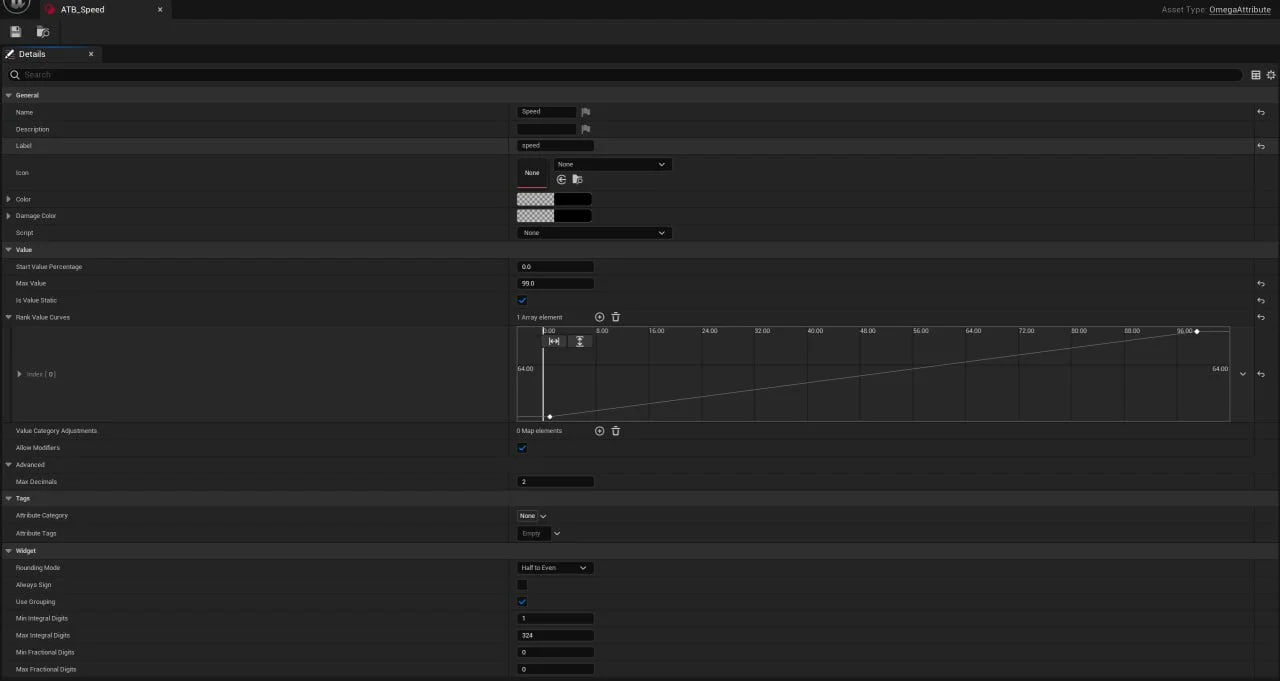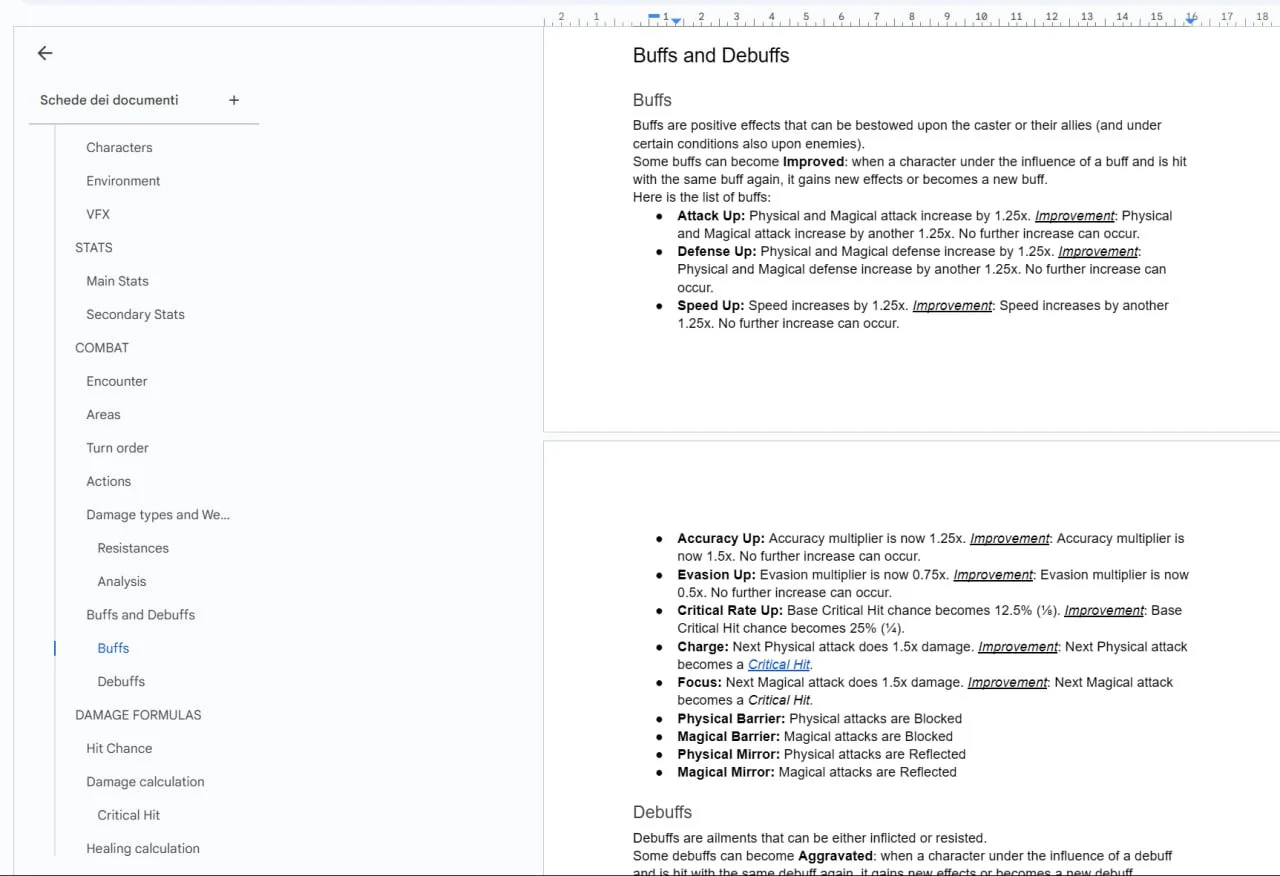Overview
This project explores a more dynamic approach to turn-based combat, allowing players to move freely within a set range during their turn, adding positional strategy to traditional JRPG mechanics. Additionally, the combat system integrates an elemental interaction system, where exploiting weaknesses doesn’t just increase damage but applies tactical debuffs, forcing players to experiment and adapt their strategy.
The key mechanics I designed include:
A dynamic movement system where characters can freely reposition within a Speed-based range.
An elemental system with unique debuffs instead of just extra damage for exploiting weaknesses.
A dual targeting system, with precision targeting for single attacks or auto lock-on when the players looks at an enemy.
Tools & Technologies Used:
Engine: Unreal Engine 5 (Blueprints)
Movement & Targeting System
Unlike grid-based RPGs, this system lets players move freely within a circular range, dynamically calculated based on Speed. To enhance control, I developed:
A smart targeting system that highlights enemies based on who the player is looking at.
A manual lock-on system, allowing players to fix their camera on a specific enemy for precision attacks.
AoE attacks function differently—rather than being locked onto an enemy, they switch to a free camera mode, letting the player manually aim large-scale spells for maximum tactical control.
Elemental System & Weaknesses
Inspired by Persona’s elemental interactions, I created a system where every attack in the game belongs to an elemental type. Enemies have four levels of resistance:
Neutral – Takes normal damage.
Weak – Takes 1.5x damage but also suffers a debuff.
Resistant – Takes reduced damage.
Immune – Completely negates the attack.
The twist is that hitting an enemy’s elemental weakness doesn’t just deal extra damage—it applies a tactical debuff based on the element. This forces players to experiment and discover enemy weaknesses while also making status effects a key combat mechanic.
Examples of Elemental Weakness Effects:
Fire Weakness → Applies Burn (Damage Over Time)
Ice Weakness → Applies Cold (Character’s Speed is halved)
Earth Weakness → Applies Root (Prevents movement for 1 turn)
Electric Weakness → Applies Shock (30% to skip next turn)
This system adds an extra layer of decision-making beyond just spamming the highest-damage spell. If an enemy is about to attack but is weak to Earth, using an Earth attack can root them, preventing movement and disrupting their plans.
There is A LOT going on behind the curtain
Stat System & Turn Order
Each character has a set of traditional RPG stats like Physical Attack, Magic Attack, Defense, and Speed. Speed serves as a key factor, influencing:
Turn order – Higher Speed means more frequent turns.
Movement range – Faster characters can cover more ground before attacking.
However, positioning isn’t just about movement range, it directly affects attack angles, AoE coverage, and enemy engagement strategies. A slower, high-defense character might need to block paths, while an agile spellcaster can reposition to land the perfect AoE attack.
The Turn Manager actor I developed updates turn orders in real time based on active buffs and debuffs, ensuring that Speed-altering effects have a meaningful impact on battle flow.
Improvement & Aggravation System
To add further depth to buffs and debuffs, I designed (yet to fully implement) the Improvement & Aggravation System, which amplifies status effects when stacked.
Improvement: If a character already has a Buff and receives the same Buff again, it becomes Improved, further enhancing the effect—but only once.
Attack Up → Physical and Magical attack increase by 1.25x.
Improvement: Another 1.25x increase (no further stacking).
Critical Rate Up → Base Critical Hit chance becomes 12.5% (⅛).
Improvement: Critical chance becomes 25% (¼).
Charge → Next Physical attack does 1.5x damage.
Improvement: Next Physical attack becomes a Critical Hit.
Aggravation: If a character already has a Debuff and receives it again, the effect intensifies or transforms into a stronger version.
Shock → 30% chance to skip next turn (3 turns).
Aggravation: Becomes Stun (skip next turn).
Burn → Damage over time (based on attacker’s highest attack stat).
Aggravation: DoT damage increases by 1.25x.
Frenzy → 30% chance of attacking an Ally (or Self if alone).
Aggravation: Becomes Berserk (75% chance of attacking an Ally, Attack Up applied).
Root → Target is immobilized for 1 turn.
Aggravation: Extended to 3 turns.
Attack Down → Physical & Magical attack decrease by 0.75x.
Aggravation: Another 0.75x decrease (no further stacking).
This system encourages strategic play, rewarding careful buff management and punishing repeated debuffs with progressively harsher penalties. It adds tactical risk and reward, making combat more engaging and dynamic.


